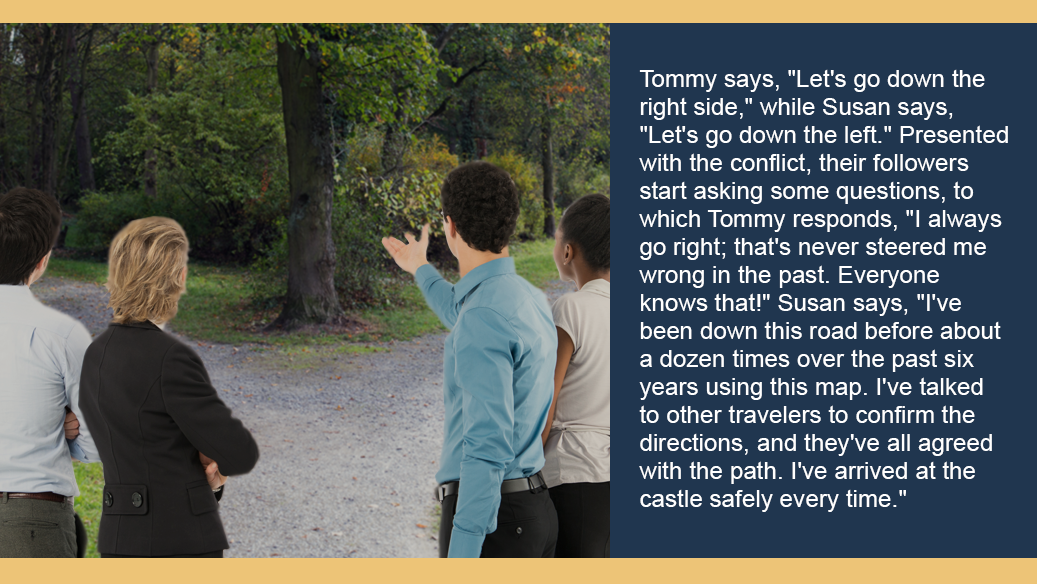Main Content
Lesson 2: Theory and Maxim
Maxim
An informal, everyday theory should actually be called a maxim. A maxim also explains the world but, rather than using empirical evidence, it is based on a personal belief system, experience, or guiding principle. In short, a leadership maxim is based on one leader’s success case; it may or may not apply to other situations. (We’ll revisit this a bit later in an example about Jeff Bezos.)
Theory Versus Maxim
A theory uses multiple kinds of evidence (primarily direct observations) from many different research studies to continually refine and improve its explanatory power. It's constantly upgrading its logic using facts that reflect reality. This continuous improvement eventually solidifies into something that we call true, because it has shown to be the case time and time again.
A maxim, on the other hand, is akin to one person’s opinion based on their personal set of circumstances. The “evidence” that they use to create their maxim will fit their personal biases. In other words, the information is cherry-picked to support a personal worldview. This issue is known as confirmation bias, and we will revisit it later in the course. A much stronger approach to knowing something is to be open-minded, review all information, and shift direction or your actions based on the reality that the information reflects.
Let’s look at a very simple example of two people leading a group down a path through the woods to a castle. Tommy has never been down the path before, but is a charismatic leader who people often follow. Susan has been on the path many times, arriving at the castle every time because she's asked others about their experiences and bought a map. At one point in the journey, they come across a fork in the road. (See Figure 2.2 for what happens next.)

This is obviously a silly example, just for fun, but what you are seeing is theory (Susan and her map) versus maxim (Tommy’s beliefs about going right) in action. It happens all the time in real life, like when you see two people debating a scientific issue on television. The two sides are presented as equal, even though the scientist is usually drawing upon theories based on facts collected from hundreds or even thousands of sources. In contrast, the politician or TV personality is using either a pseudoscientific perspective or a maxim to make their case. Unfortunately, this kind of debate has reduced the dissemination of useful information into the public (Otto, 2016). That's why a course like this is so important—it will help you sort through what is useful evidence and what is not.


